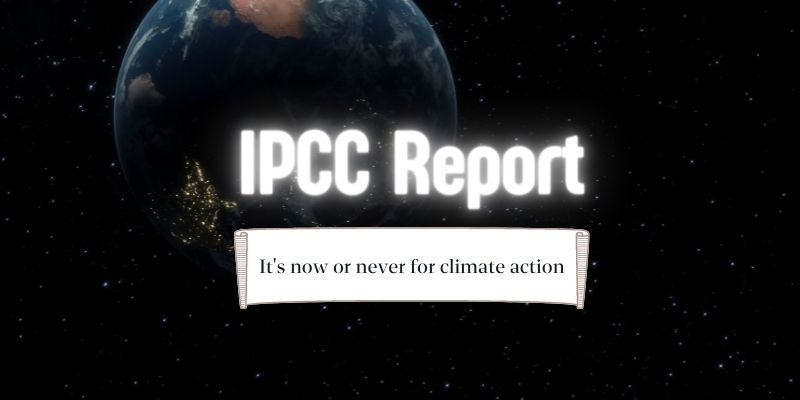
This third and final part of its sixth assessment report was released in April 2022
Read more
The Intergovernmental Panel on Climate Change (IPCC), a global body of scientists that makes periodic reviews of climate science, has issued the third part of its sixth assessment report.
The first part of the assessment was published in August 2021. It was centered on the scientific basis of climate change and warned that 1.5°C warming was likely to occur by 2040. The second installment of the report, which was released in February 2022, discussed climate change impacts, risks and vulnerabilities, and adaptation options. This third and final report, which looked into the possibilities of reducing emissions, was released in April 2022.
The report includes a comprehensive list of options from the energy, construction, transportation, land, and industrial sectors, demonstrating that it is feasible to cut emissions fast and affordably.
Here are the takeaways:
- Anthropogenic Greenhouse gas (GHG) net emissions were 54 percent higher in 2019 than they were in 1990, but growth is slowing – Net emissions are emissions that are accounted for after deducting emissions absorbed by the world’s forests and oceans. Anthropogenic emissions are those that result from human-caused activities such as coal combustion for electricity or forest clearing.
- Least developed countries emitted only 3.3 percent of global emissions in 2019 – In 2019, the Least Developed Countries (LDCs) accounted for only 3.3 percent of world emissions – Carbon inequality persists, with LDCs accounting for just 3.3 percent of global emissions in 2019. Furthermore, in 2019, 41 percent of the world’s population resided in nations with per capita CO2 emissions of less than 3 tCO2e.
- Pledges to the Paris Agreement are unsatisfactory; emissions must fall 43 percent by 2030 compared to 2019 – Current pledges made by countries who have signed the Paris Agreement are known as Nationally Determined Contributions (NDCs). The IPCC believes that warming will likely surpass 1.5 degrees Celsius (°C) this century, thereby failing to meet the Paris Agreement’s mission.
- Solutions are abundant and inexpensive throughout sectors, including energy, buildings, and transportation, as well as individual behavioral adjustments – Solutions are accessible at reasonable prices. Since 2010, the costs of low-emission technology have steadily decreased. According to the report, “several mitigation options, notably solar energy, wind energy, electrification of urban systems, urban green infrastructure, energy efficiency, demand-side management, improved forest — and crop/grassland management, and reduced food waste and loss, are technically viable, are becoming increasingly cost-effective, and are generally supported by the public.”
- The effect on GDP would be negligible, and the long-term advantages of rapidly reducing emissions would outweigh the early expenses – The IPCC states that low-cost climate mitigation options could halve global GHG emissions by 2030.
- Finance falls short, particularly in developing countries, but there is enough money in the world to close the gap.
Source: Down to Earth